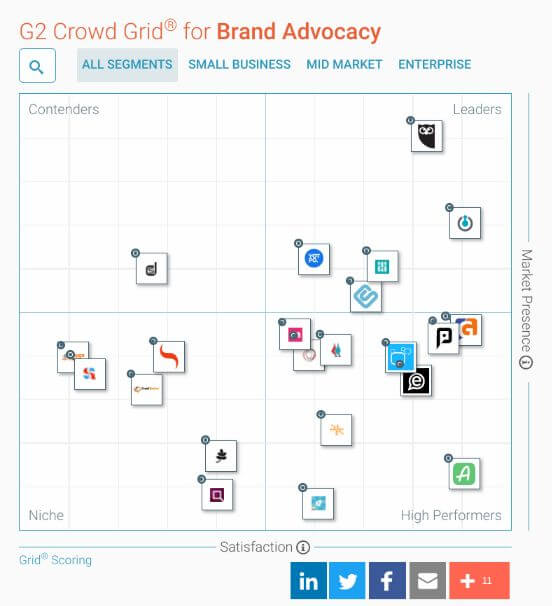I’ve written in the past about why you need to enlist employees as advocates for your company. The good news is most B2B marketers now get the importance of putting an employee advocacy program in place.
Create the right incentives for employees to become advocates
The bad news is many of these same marketers think advocacy is limited to getting employees to promote company content. It’s as if marketers are saying:
“Hey, do you mind promoting our latest press releases, blog posts, and webinar promotions to your social networks all the time. Please?”
Of course, what employees actually hear is:
“We really need you to continually spam your personal networks with company content that’s probably not relevant and can be pretty annoying.”
Okay, maybe I’m exaggerating a bit but you get the point.
No wonder only a small percentage of a company’s workforce typically participates on a regular basis. If you’re solely focused on what employees can do for you, rather than what you can do for employees, you’ll never unlock the full potential of employee advocacy.
So how do you rally everyone at the company to become employee advocates? Start by doing these five things:
1. Invest in an employee advocacy platform
If you’re serious about turning the staff into brand champions (which you should be) then invest in a platform that can help automate advocacy processes and measure impact. These days there are lots of vendors for almost any budget to choose from.
For instance, Dynamic Signal and Bambu (by Sprout Social) make it super easy to share content, track activity levels and social media impact, and even provide gamification elements as further incentive to participate.

The G2 Crowd Grid for Brand Advocacy platforms
For a broader look at vendors in the space, have a look at the G2 Crowd Grid for Brand Advocacy.
According to G2 Crowd, “A brand advocate is a customer or employee of a business who pro-actively shares it via mobile, email, or social media with or without incentive.” In other words, employee advocacy is a subset of brand advocacy.
When evaluating vendors, look for those with a feature set tailored to your employee advocacy needs.
2. Focus on what’s in it for employees
It’s no secret how the company benefits when the workforce promotes brand content. But why should employees actively join in? That’s the question to focus on when rolling out your employee advocacy program.
Consider educating everyone on the career benefits of building their own “professional brand” and social media audience, plus how sharing content about your company and industry can help with that.
Think about ways to recognize top employee advocates: acknowledge them at company meetings, invite them to represent the company at industry events, hook them up with your PR team and give them opportunities to provide quotes in industry publications… and, of course, a bit of ‘extra credit’ come performance review time never hurts!
Just remember, the more reasons you can give for how an advocacy program helps employees the more likely they’ll participate!
3. Involve employees in content curation
Yes, develop and curate high-quality brand and industry content that employees will want to promote.
But don’t stop there. Ask folks what content topics they and others in their department already like to share… and empower them to curate this content for the employee advocacy team. When employees see this “two way street,” they’ll feel rewarded, which makes them more likely to curate more content going forward.
In addition, employees have a close connection to your customers and industry. They may uncover nuggets of content that you otherwise would have missed.
Give employees the opportunity to find some content that has nothing to do with your company or industry. For example, job-related, sports, and holiday content always gets employees sharing up a storm!
4. Let employees advocate in ways they want to
Why should employee advocacy be limited to sharing content? After all, there are many ways folks can help spread the good word and build the company’s brand.
Maybe that’s writing for the corporate blog, answering questions on Quora, being a domain expert in Linkedin and Facebook groups, or evangelizing at industry events and meetups. Simply put, employees should be able to advocate in the ways they want to. So why not ask them how they’d like to help out?
5. Promote and reinforce executive buy-in to employee advocacy
Rallying employees to become advocates isn’t a one-time thing – it takes an ongoing effort to communicate the importance of advocacy, and provide training to keep everybody engaged with the program.
Employees should be recognized as advocacy rock stars within the different parts of the organization. The CMO, CEO, and other C-Suite executives need to actively support, invest in and participate in the program. Simply put, advocacy must become part of the company culture!
Your turn
Where are you in the employee advocacy journey? What are you doing to make employee advocacy successful at your company? Let us know in the comments section below. Thanks for reading!
Note: This post was originally published on November 26, 2017 and updated on January 21, 2019.

0 Comments on "5 Ways to Ignite Employee Advocacy at Your Company"